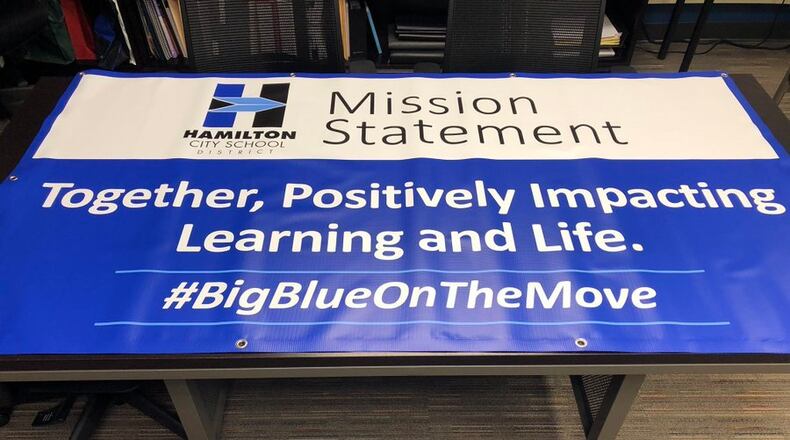New Miami Schools also improved from a D to C, while Talawanda Schools dropped from a B to C.
Middletown was one of the few school systems among Ohio’s 607 public school districts to score in the bottom 5 percent of the ODE’s Performance index rating.
And in the Prepared for Success measure, Middletown was 29th worst, also in the bottom 5 percent in the state.
But Middletown officials noted the district’s graduation rate is up, from 85.6 percent the previous school year to 91 percent in 2018-19. And the success percentage among kindergarten to third-grade readers improved from 16.9 to 22.8 percent, they said.
Like some other area superintendents, Middletown’s Marlon Styles Jr. said the annual state report cards do not provide a comprehensive picture of a school district.
“The report results provide a one-time snapshot on student learning,” said Styles, who promised to “continue our efforts on early literacy growth and growing all students academically.”
Butler County’s largest school system, the 16,500-student Lakota district, again earned an overall grade of B, as did Monroe, Madison and Ross schools.
Lakota Superintendent Matt Miller echoed Styles’ criticisms and said “we have been advocating for less of a focus on state testing and adding more ways to measure student success.”
Fairfield and Edgewood earned Cs for the second consecutive school year.
The state grades, which are compiled largely from student performance on exams, are from the 2018-19 school year.
This is only the second year the ODE has used overall letter grades - among other grading measurements for various academic categories - for each district in Ohio.
Despite Hamilton’s improved overall grade to a C, the city schools’ four-year graduation rate was the 13th worst in Ohio with 78.8 percent graduating. This was an improvement over the previous school year’s rate of 77.2 percent.
Hamilton Superintendent Mike Holbrook had criticism of the report cards.
“The current state report card system only measures a small portion of what districts currently do to serve students,” said Holbrook. “Hamilton Schools do not use the state report card to define the district or community.”
More than half of each school’s overall grade depends on how students perform on state tests each spring. Six factors are nearly evenly weighted — achievement, progress and “gap closing” on state tests, plus graduation rate, improvement in K-3 reading, and a “prepared for success” measure based on high school accomplishments.
Middletown and Hamilton both have populations that are among two of the lower household income cities in Butler County.
The state test results that form the backbone of the report card have long been closely correlated to wealth and poverty. Schools in higher-income communities generally test well, while those in lower-income areas usually score lower.
Moreover, parts of state and federal law require ODE to produce a detailed state report card for schools with data in certain categories. The level of disagreement over the process is such that the report card has simultaneously been called too complicated and too simplistic.
Talawanda Superintendent Ed Theroux said “I am not a fan of the new or old report card.”
Theroux said his district’s drop in overall grade from a B to a C doesn’t reflect the schools missed a B grade by two hundredths of a point.
While the annual report cards do “provide the district and other districts with some data, it is a one-time data point that does not adequately reflect the efforts of our district, schools, staff, parents and community and effects of developing the whole child,” he said.
In southern Warren County, Mason Schools increased its overall grade from B to an A, which is only the second A — Oakwood Schools in the Dayton area earned the same overall mark — by a district in Warren and Montgomery counties.
Mason finished 23rd in Ohio — among the top 5 percent of districts — in student progress.
And in Warren County Kings also earned a B for the second year in a row.
About the Author
